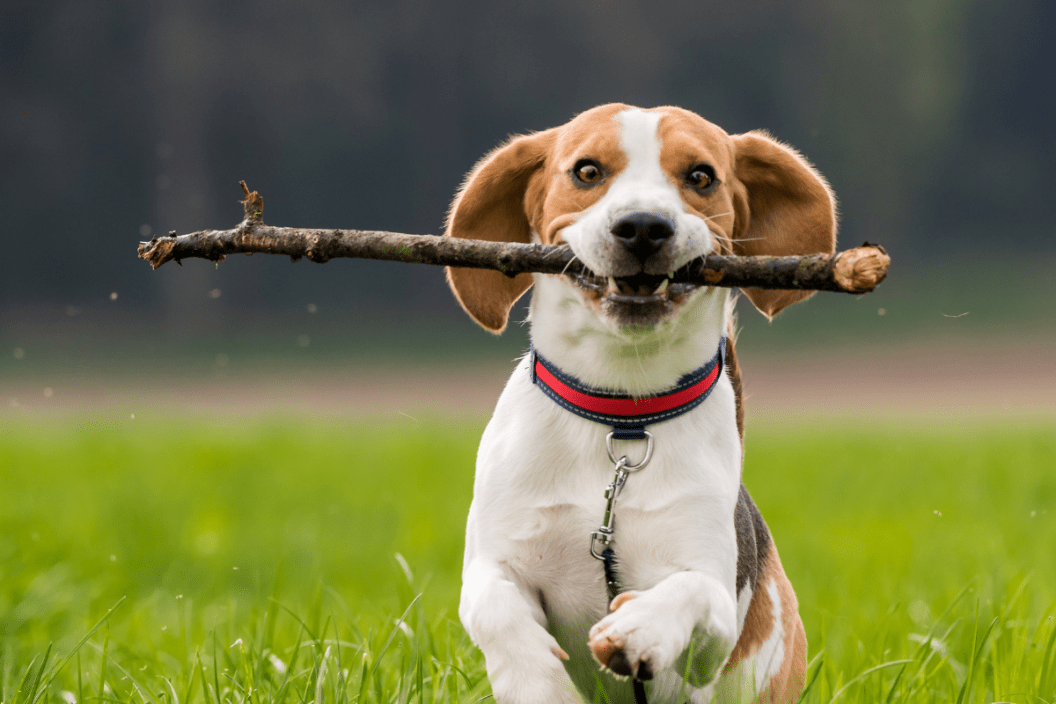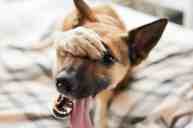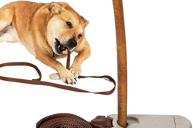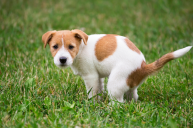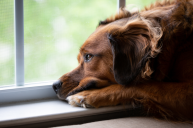Dogs are chewers by nature, but why do dogs eat sticks?
They'll gnaw on just about anything they can get their mouths on. Although many gravitate towards more traditional items such as non rawhide bones, chew toys, and, of course, the occasional shoe (always one from the nicest pair in your closet), some dogs chow down on more unusual items. Trees and their derivatives - sticks, bark, pine cones, mulch, acorns, wood objects, etc., are one such example of an unconventional item that dogs sometimes chew on, but why do dogs eat sticks?
If you've ever looked out the window and noticed your dog gnawing away at a tree in the backyard, you're not alone. Many dog owners have scratched their heads over this strange pet behavior.
It might look funny, but tree chewing is no laughing matter. Stick chewing has no nutritional value for your dog, and some trees can even be toxic. Red maple and black walnut trees are particularly known for being toxic to dogs. Even the bark from nontoxic trees, when ingested in large quantities, can cause issues by creating intestinal blockages. Chewing trees can damage your dog's teeth, and small splinters of wood can dislodge and become stuck in your dog's mouth and esophagus. Larger splinters can cause even more health issues in the intestinal tract.
So, why do dogs like chewing sticks and trees? There are a few possible explanations for the behavior:
Why Do Dogs Eat Sticks?
1. Tree bark is tasty.
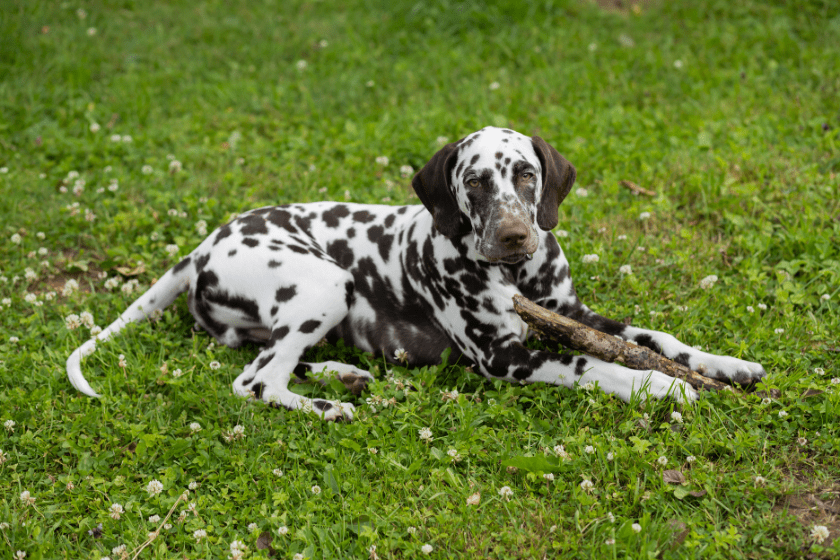
There's no accounting for taste, as the saying goes. The first reason your dog likes to chew sticks is because he simply likes the way it tastes and feels in his mouth.
Tree bark contains cellulose, which is a type of fiber. Some dog food manufacturers even add cellulose to their products, as fiber facilitates good digestion and colon health. It also promotes a feeling of fullness.
If your dog has been chowing down on the trees in the yard, it's possible he feels hungry, or just needs a little more fiber in his diet. Consider adding a bit of food at mealtimes, or switching to food items with higher fiber content.
2. Your dog is anxious or bored.
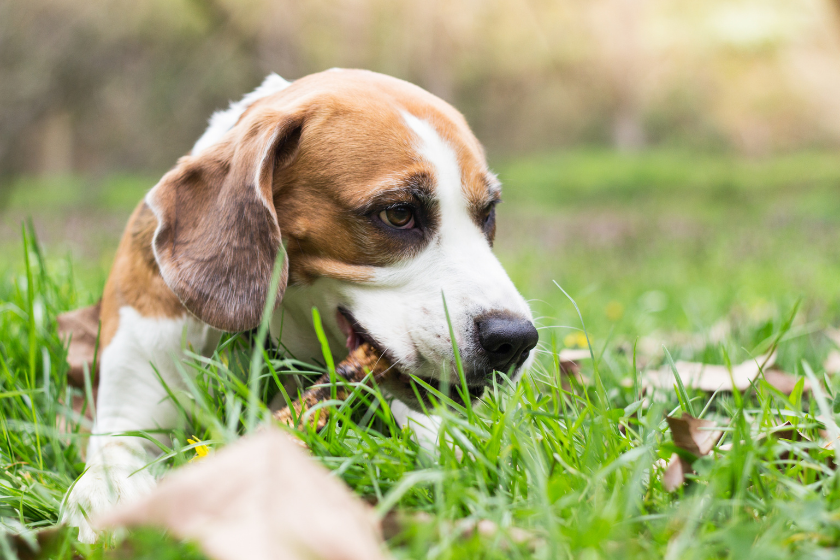
When your dog is engaging in a repetitive bad habit you don't quite understand, it's always important to ask yourself whether this could be the result of anxiety or boredom.
If your dog spends long hours alone outside, he could be feeling bored or suffering from separation anxiety. In order to ease the stress, he might start to chew on pieces of wood.
If you suspect your dog's tree chewing could be the result of stress due to boredom or anxiety, try increasing the amount of daily exercise he gets, and try to spend more quality time together. Adequate physical and mental stimulation could help lower your dog's stress level and keep him from feeling the impulse to chew.
3. Pica.
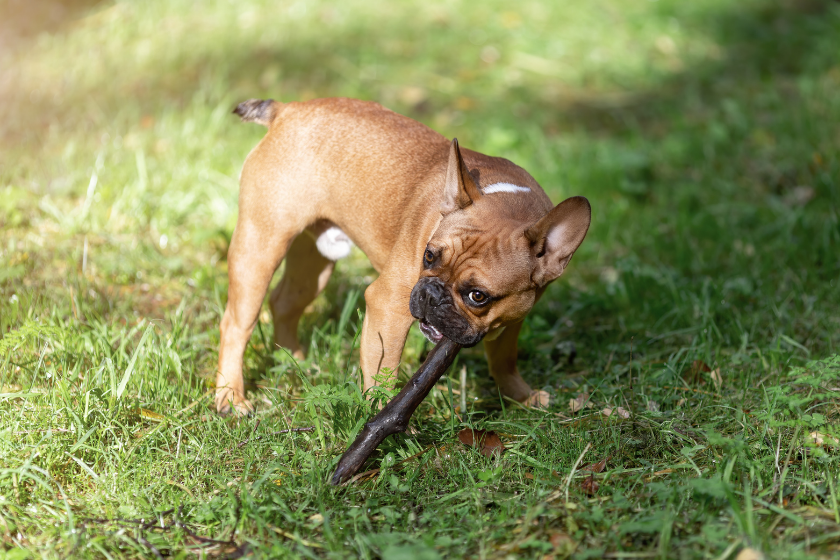
Pica is a condition that drives affected individuals to eat nonfood items. In many instances, it is a compulsive destructive behavior problem that can lead to serious health problems for your dog. Stress, boredom, depression, lack of exercise, and lack of socialization can cause pica to develop, but the condition can also develop from medical conditions including: nutritional deficiencies, immune mediated hemolytic anemia (IMHA), iron deficiency anemia, intestinal parasites, tumors, hyperthyroidism, and diabetes.
Symptoms of pica in dogs include:
- Vomiting
- Diarrhea
- Loose stool
- Chronic bad breath
In the case of an intestinal blockage, symptoms of pica include:
- Strained bowel movements
- Inability to produce bowel movements
- Dark stools
- Burping
- Excessive drooling
- Abdominal contractions
If you suspect your dog's compulsive tree chewing could be due to pica, seek veterinary assistance immediately.
4. The natural inclination to chew is simply overpowering.

Dogs are natural chewers. Some, especially teething youngsters, will chew on anything they can. Tree trunks just so happen to be conveniently placed at mouth height.
Try to discourage chewing wood by redirecting your dog's attention and energy. Give him more appropriate alternatives to chew on, such as chew toys, a Kong toy, or even mentally stimulating interactive dog toys filled with tasty treats or peanut butter.
So, how the heck do you stop your dog from eating trees and eating sticks? Supervise outdoor time as best you can. When you notice your dog going for the trees, use actions such as a verbal scolding or making an unpleasant noise (like shaking a can filled with coins or small pebbles), or you could teach your pooch the 'leave it' command, to discourage the behavior. You can also purchase a nontoxic deterrent spray, or bitter apple spray that has a bitter taste, and coat the trees with it. You could also try putting a small amount of Tabasco sauce, hot sauce, or cayenne pepper around the tree trunk to deter your dog. A shock collar can also be used on the lightest setting as negative reinforcement — make sure you know how to use the e-collar correctly.
Finally, make sure your dog gets plenty of exercise and socialization every day, and leave a few dog toys out in the yard so that if he feels the need to chew, he has suitable options. Also, pick up excess sticks from the yard that may tempt your dog.
If your dog is still ruining all the trees in your yard, professional advice and dog training with a behaviorist may be a good idea — but remember, methods with positive reinforcement are always the best!
While dogs chewing sticks is completely natural, it can become a dangerous habit if your dog is actually ingesting it into their digestive tract. As ingestion of trees and sticks could possibly mean there are bigger medical issues at hand; if your dog has an upset stomach, be sure to take your furry friend to the vet for x-rays.
Why do dogs eat sticks? How do you handle this bad habit? Let us know on the Wide Open Pets Facebook page!
This article was originally published December 5, 2017.
READ MORE: Dogs Won't Let Owner Throw Out Their Big Stick, the Christmas Tree
